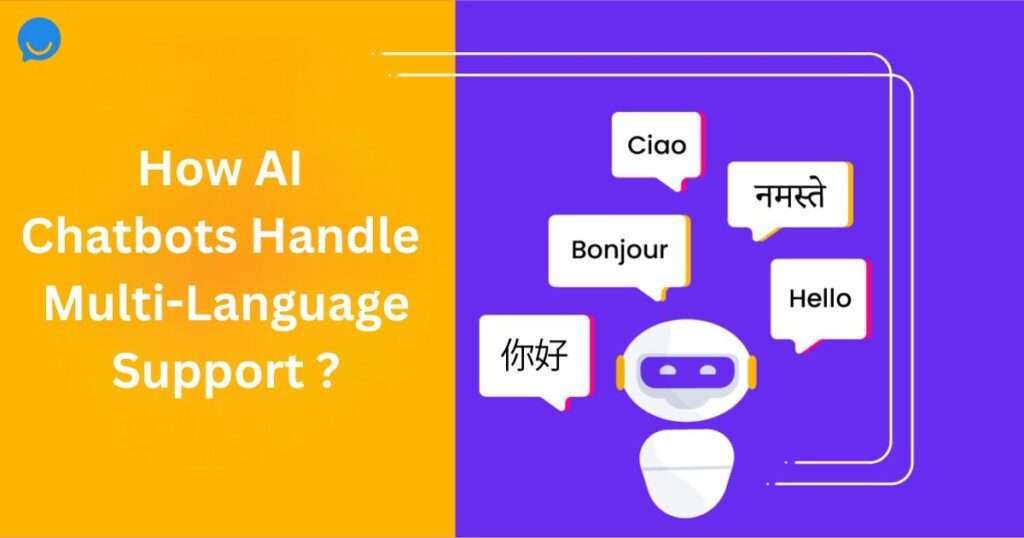
Expanding your business globally is exciting, but it also comes with its fair share of challenges—one of the biggest being language barriers. Imagine having customers across continents but struggling to communicate effectively with them. Frustrating, right?
This is where AI chatbots come to the rescue. With the ability to support multiple languages, these intelligent tools can help businesses connect with diverse audiences and provide outstanding customer experiences. Let’s explore how AI chatbots solve the multi-language challenge and why they are essential for global businesses.
The Problem: Language Barriers in Global Business
When businesses expand internationally, they encounter customers speaking different languages. While English is widely used, it’s not everyone’s first choice. In fact:
- 76% of people prefer buying products or services in their native language. (Source: CSA Research).
- 40% of customers won’t make a purchase if the website or support isn’t available in their language.
Ignoring this can lead to misunderstandings, lost sales, and unhappy customers.
Traditionally, companies have relied on hiring multilingual agents or using manual translation services, which are expensive and time-consuming. Small businesses, in particular, struggle to afford these resources.
So, how can businesses bridge this gap efficiently?
The Solution: AI Chatbots for Multi-Language Support
AI chatbots are game-changers for businesses looking to overcome language barriers. Equipped with natural language processing (NLP) and translation capabilities, they provide a cost-effective way to communicate with customers in their preferred language.
Here’s how AI chatbots handle multi-language support and make global communication effortless:
1. Detecting and Responding in the Right Language
Ever wondered how AI chatbots know which language to use? It’s simple! These bots automatically detect the language a customer types in and respond accordingly.
If a customer starts chatting in Spanish, the chatbot instantly switches to Spanish. No manual selection, no awkward pauses—just smooth interaction.
???? For example::
E-commerce platforms like Zalando use AI chatbots to provide customer support in multiple languages, ensuring buyers from different countries feel understood.
2. Real-Time Translations for Seamless Conversations
AI chatbots are powered by advanced translation tools like Google Translate or custom-built AI models. This enables them to translate conversations in real-time, maintaining the flow of communication without delays.
- They don’t just translate word-for-word but understand the context to provide accurate and meaningful replies.
- Unlike humans, they don’t get tired or confused, even during high-traffic times.
3. Adapting to Cultural Differences
Language is more than just words; it’s about understanding culture, tone, and expressions. AI chatbots are trained to recognize these nuances and adapt accordingly.
For example:
- In English, a chatbot might say, “How can I assist you today?”
- In Japanese, it might use a more formal and culturally appropriate tone, like “どのようにお手伝いできますか?” (How can I help you?).
This cultural sensitivity builds trust and makes customers feel valued.
4. Cost-Effective and Scalable Support
Hiring human agents fluent in multiple languages can be expensive, especially for smaller businesses. AI chatbots offer a scalable alternative, handling thousands of queries across languages simultaneously.
Why this matters:
- It’s affordable: You save on hiring and training costs.
- It’s scalable: Whether you have 10 or 10,000 customers, the bot works the same.
- It’s 24/7: Chatbots never sleep, ensuring round-the-clock support.
5. Continuous Learning and Improvement
AI chatbots don’t just stop at what they’ve been trained for—they keep learning. With every interaction, they analyze patterns, improve responses, and adapt to new slang or idioms.
For example:
Let’s say a customer uses a regional term the chatbot hasn’t encountered before. The bot can flag it, learn its meaning, and use it correctly in future interactions.
6. Enhanced Customer Satisfaction
Fast, accurate, and multilingual responses mean happier customers. When customers feel heard and understood, they are more likely to stay loyal to your brand.
Statistics You Should Know:
- Businesses using AI chatbots report up to a 40% increase in customer satisfaction scores.
- Chatbots can resolve 80% of routine queries, freeing human agents to focus on more complex tasks.
Real-Life Case Study: Booking.com
Travel giant Booking.com uses AI chatbots to assist customers worldwide. With users booking trips in over 40 languages, the chatbot handles inquiries about reservations, cancellations, and recommendations.
- It detects the user’s preferred language based on their profile or input.
- Provides real-time assistance, reducing wait times.
- Offers culturally tailored responses, enhancing the user experience.
The result? Faster issue resolution and happier travelers across the globe.
How to Implement Multi-Language Chatbots for Your Business
Ready to introduce an AI chatbot to your business? Here’s a step-by-step guide:
- Choose the Right Platform: Look for chatbot platforms like Beyondchats, Rasa, or IBM Watson that offer robust multi-language support.
- Train the Bot in Target Languages: Use quality datasets to teach the chatbot not just the language but also cultural nuances.
- Test for Accuracy: Run test conversations to ensure translations are accurate and contextually correct.
- Monitor Performance: Use analytics to track how well the chatbot performs and identify areas for improvement.
- Update Regularly: Keep your chatbot updated with new languages, regional slang, and customer preferences.
What’s Next for AI Chatbots and Multi-Language Support?
AI chatbots are evolving rapidly. Here’s what the future holds:
- Voice Interactions: Multilingual voice bots will become more common, offering hands-free support in different languages.
- Better Context Understanding: Bots will interpret emotions and intent more accurately, making conversations even more natural.
- Hyper-Personalization: Chatbots will combine language skills with user data to deliver highly tailored experiences.
Conclusion:
In today’s globalized world, language should never be a barrier to growing your business. AI chatbots offer a simple, effective solution for handling multi-language support, allowing you to connect with customers anywhere, anytime.
So, what’s stopping you? Start exploring chatbot solutions today and watch your business go global effortlessly!
Ready to take the first step? Let’s make it happen!




